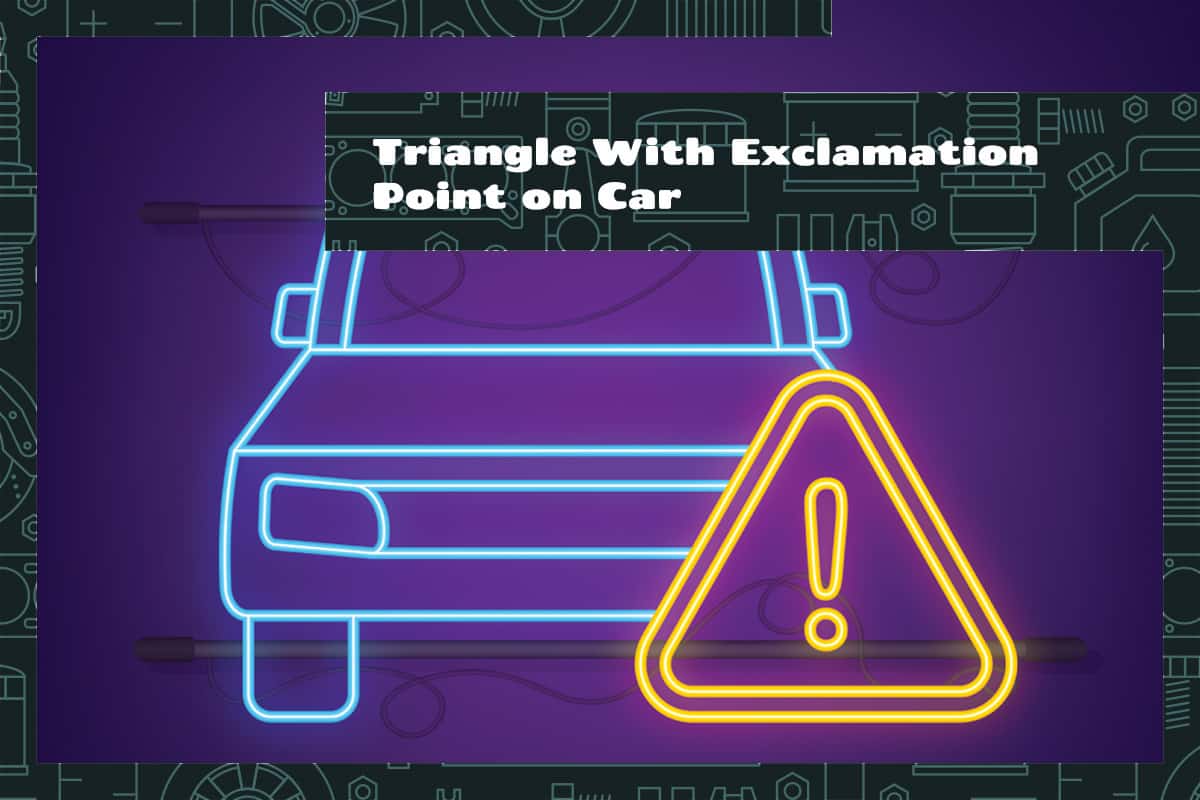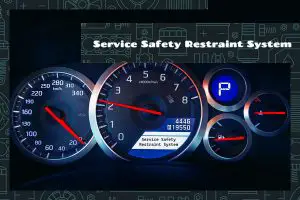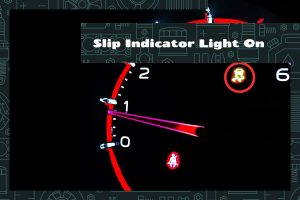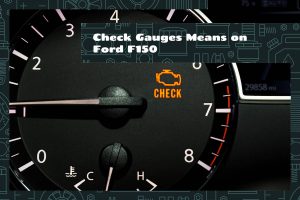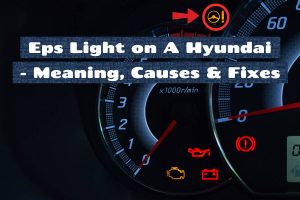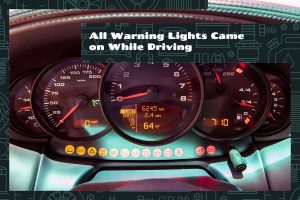Navigating your car’s dashboard symbols can sometimes feel like deciphering a secret code. Among these icons, one symbol that often confuses drivers is the triangle with an exclamation point. This enigmatic sign is a part of your vehicle’s intricate communication system, silently working to keep you informed about your car’s health and safety status.
The triangle with an exclamation point on your car is a general warning sign. It often indicates a malfunction within the car’s systems or a safety issue. Common triggers for this symbol can be mechanical faults, electronic system errors, or specific environmental conditions.
In this brief guide, we will explore the meaning of the triangle with the exclamation point symbol, what might trigger it, and how to respond.
What is the Triangle with Exclamation Point?
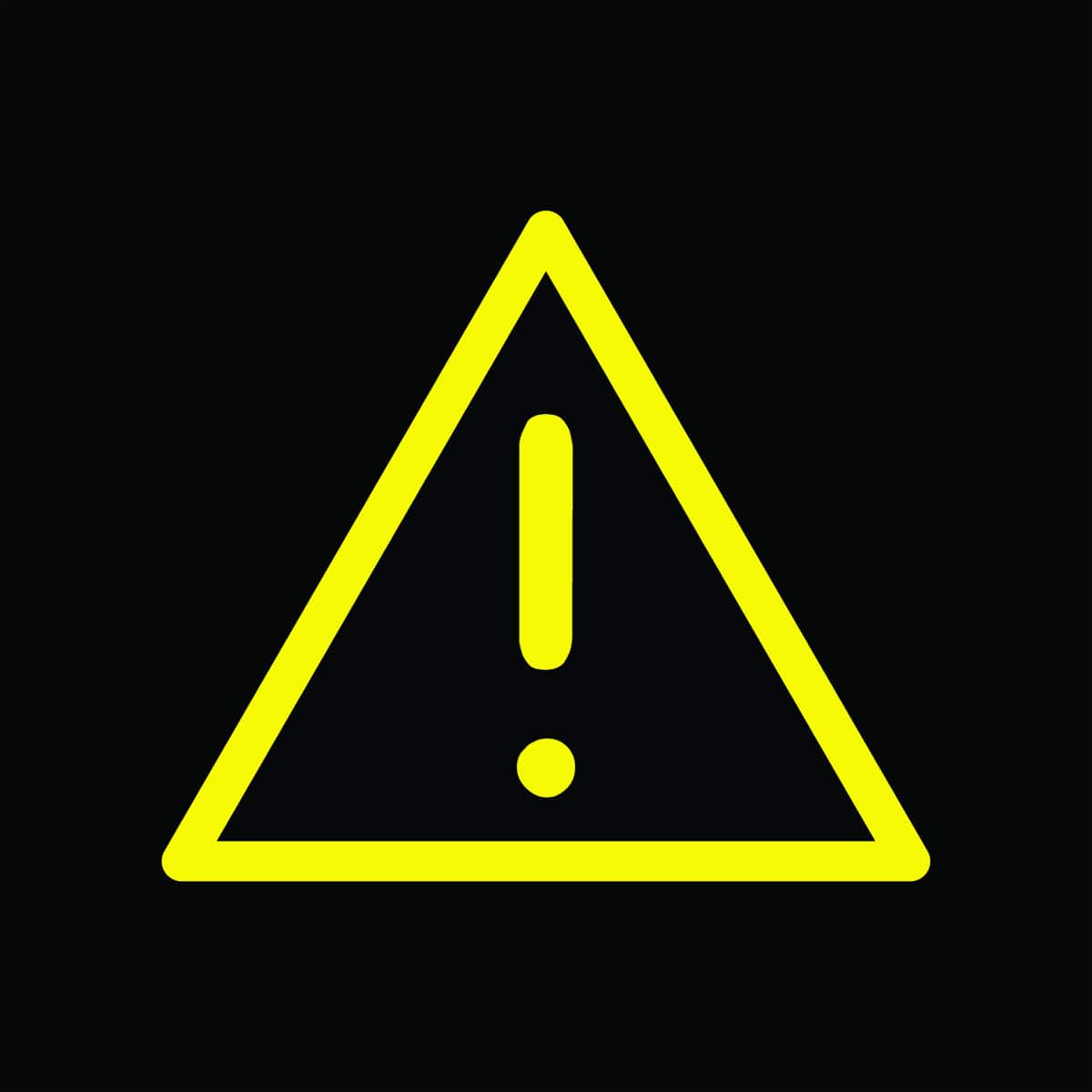
Every modern vehicle comes equipped with a dashboard that uses a variety of symbols to communicate vital information to the driver. Among these symbols, the triangle with an exclamation point, also known as the warning triangle, plays a crucial role in alerting the driver about potential issues that need immediate attention.
What Does it Mean?
The triangle with exclamation point symbol serves as a general warning symbol in your vehicle. Its main purpose is to draw the driver’s attention to a problem that has been detected within the car’s systems.
This symbol can sometimes accompany other specific warning signs on your dashboard. For instance, if there’s an issue with your braking system, you might see both the brake system warning light and the general triangle with exclamation point symbol lit up on your dashboard.
The Importance of Paying Attention to this Symbol
While it’s easy to dismiss the triangle with an exclamation point symbol as just another cryptic car icon, doing so could lead to serious consequences.
This symbol acts as a catch-all warning sign, designed to alert drivers of potential issues within the vehicle. Ignoring this warning could allow a minor problem to escalate into a major fault, leading to costly repairs, reduced vehicle performance, or even potential safety risks.
Variations of the Triangle with Exclamation Point and their Meanings
While the basic triangle with exclamation point serves as a general warning, there are some variations of this symbol that indicate specific problems. Understanding these variations can provide a more precise diagnosis of the problem.
1. Regular Triangle with Exclamation Point
As mentioned earlier, the regular triangle with an exclamation point is a general warning sign. It indicates a problem, but not the specific type. It could be related to any system in your car – engine, brakes, tires, electrical, or even the fluid levels.
2. Triangle with Exclamation Point Inside a Circle
When the triangle with an exclamation point is located inside a circle, it usually indicates a problem with the vehicle’s stability control system. This system helps you maintain control of your vehicle during certain driving conditions, like when you’re making sharp turns or driving on slippery roads. A fault in this system can significantly affect your vehicle’s handling and overall safety.
3. Triangle with Exclamation Point and an Arrow Around It
If the triangle with an exclamation point symbol is surrounded by an arrow, this typically denotes an issue with your Anti-lock Braking System (ABS). This system prevents the wheels from locking up and helps maintain steering control during an emergency stop or when braking on a slippery surface. An issue with the ABS can compromise your vehicle’s stopping power and control.
What Triggers the Triangle with Exclamation Point Symbol? (and Potential Fixes)
The triangle with the exclamation point symbol acts as a watchful sentinel for various systems in your car, alerting you when something is out of order. While this symbol serves as a general warning, it usually gets triggered by a handful of common issues, primarily related to mechanical problems, electronic system errors, and certain environmental conditions.
Possible Mechanical Issues
Mechanical issues are typically caused by normal wear and tear, insufficient maintenance, or manufacturing defects. Here are some common mechanical problems that can trigger the warning triangle:
1. Engine Issues
Engine-related problems such as overheating, low oil pressure, or a significant drop in performance can activate the warning triangle.
Ensure the engine oil level is within the recommended range for issues like overheating or low oil pressure. If the engine continues to overheat, it’s crucial to stop the vehicle and allow the engine to cool down to prevent severe damage. In both cases, professional help should be sought to resolve the issue permanently.
2. Braking System
If your car’s braking system has issues like low brake fluid, worn-out brake pads, or a malfunctioning ABS, the warning triangle may light up.
If the braking system is the culprit, check the brake fluid level and ensure it’s within the recommended range. Also, have a professional inspect your brake pads and the overall brake system for potential issues.
3. Tires
Underinflated or overinflated tires and tire punctures or significant wear can trigger the warning triangle.
Ensure your tires are inflated to the recommended pressure, usually found in your vehicle’s manual or on a sticker inside the driver’s door. If there’s a puncture, the tire should be repaired or replaced immediately.
Electronic System Errors
Electronic system errors can be harder to diagnose than mechanical issues. However, modern diagnostic tools can help identify the issue more accurately. Some common electronic issues include:
1. Sensor Failures
A failure or malfunction of any sensor in the vehicle, be it the oxygen sensor, mass airflow sensor, or wheel speed sensor, can trigger the warning triangle.
A diagnostic scan tool can identify which sensor is malfunctioning. Once identified, the faulty sensor can be replaced or repaired by a professional.
2. Software Glitches
Modern vehicles heavily rely on software to manage various functions. If a software glitch occurs, it might trigger the warning triangle.
In the case of software glitches, a vehicle reset or software update may solve the problem. This is best done by a professional to avoid any unintended consequences.
3. Electrical Component Failures
Failures in electrical components like the alternator, battery, or wiring can also activate the warning triangle.
For issues with the battery or alternator, a professional can test these components to determine if they need replacement. For wiring issues, a thorough inspection and repair of the wiring system should be carried out by a professional.
Environmental Factors
Certain environmental factors can also cause the warning triangle to light up. This is because extreme conditions can cause the vehicle’s systems to operate outside of their standard parameters. Some of these factors include:
1. Extreme Temperatures
Very high or low temperatures can affect your car’s engine, battery, tires, and other systems. For instance, extremely low temperatures can reduce battery performance, triggering the warning triangle.
In the case of extreme temperatures, try to park your vehicle in a sheltered location to protect it from the elements. If the warning triangle persists, it may indicate an underlying issue that needs professional attention.
2. High Altitudes
At high altitudes, the air density decreases, which can affect engine performance and cause the warning triangle to light up.
If you’re driving at high altitudes and the warning triangle lights up, consider seeking professional advice. Modern vehicles are designed to adjust to changes in altitude, and the warning symbol could indicate a problem with this system.
3. Rough Roads or Off-roading
Driving on rough roads or off-road can stress your vehicle’s suspension and other components, potentially triggering the warning triangle.
If the warning triangle lights up while driving on rough roads or off-road, it could mean your vehicle’s suspension or other systems are struggling with the conditions. In this case, professional inspection and service might be necessary.
